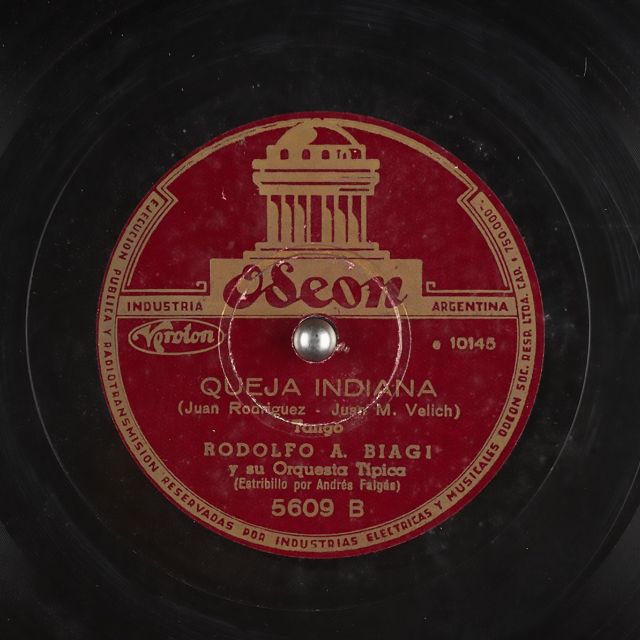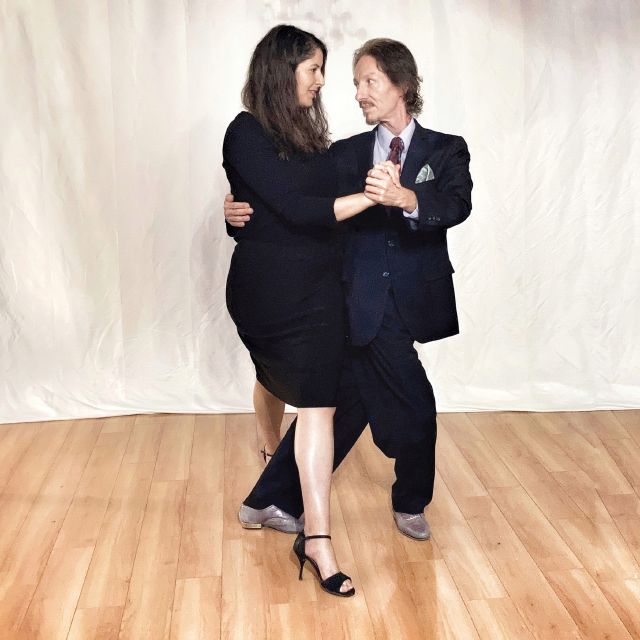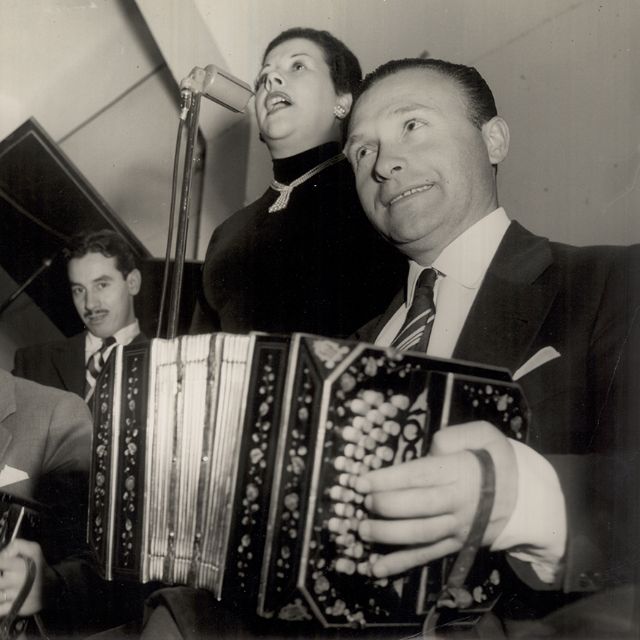“Queja indiana” by Rodolfo Biagi y su Orquesta Típica with Andrés Falgás in vocals, 1939.
“Queja indiana” by Rodolfo Biagi y su Orquesta Típica with Andrés Falgás in vocals, 1939.

Juan Rodríguez
Pianist, composer and leader (October 19, 1895 – April 4, 1928)
He began his studies at the conservatory in Buenos Aires. Then, his parents took him to Spain, and at the National Conservatory of Barcelona, he perfected himself under the direction of a famous maestro in piano and harmony.
From Barcelona, he traveled to Paris, where he was distinguished.
He returned to Argentina in 1914.
In 1927 he obtained one of the first prizes in the National Record Contest at the Palace Theater, on Corrientes Street, with the tango “Queja indiana”, with lyrics by Juan Velich, which made it possible for it to be recorded by Carlos Gardel.
Listen and buy:
-
Amazon music
-
iTunes music
-
Spotify
We are happy to have a collaboration with the people from tangotunes.com from whom some of you may have heard, they do high-quality transfers from original tango shellacs.
It is the number 1 source for professional Tango DJs all over the world.
- Now they started a new project that addresses the dancers and the website is https://en.mytango.online
You will find two compilations at the beginning, one tango and one vals compilation in amazing quality.
The price is 50€ each (for 32 songs each compilation) and now the good news!
If you enter the promo code 8343 when you register at this site you will get a 20% discount!
Thanks for supporting this project, you will find other useful information on the site, a great initiative.
More Argentine Tango music selected for you:
We have lots more music and history










